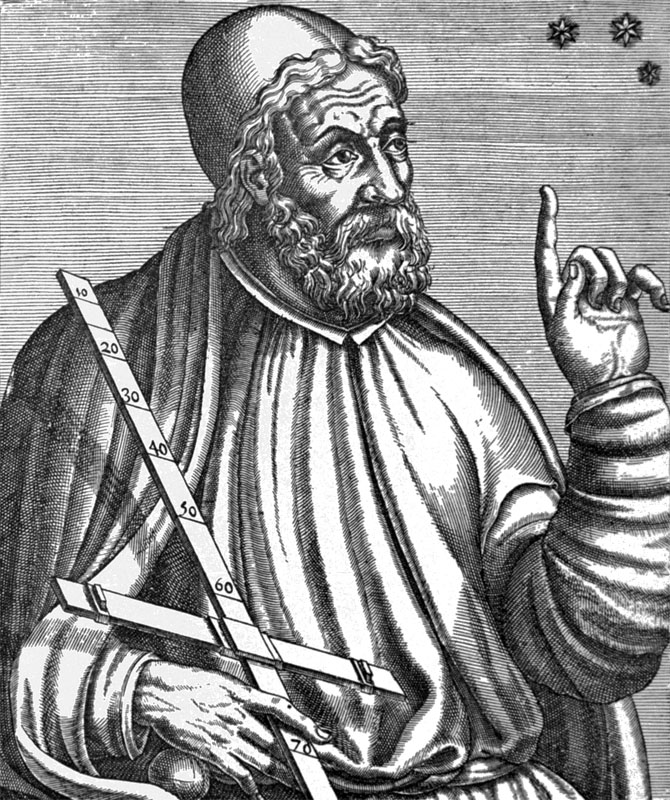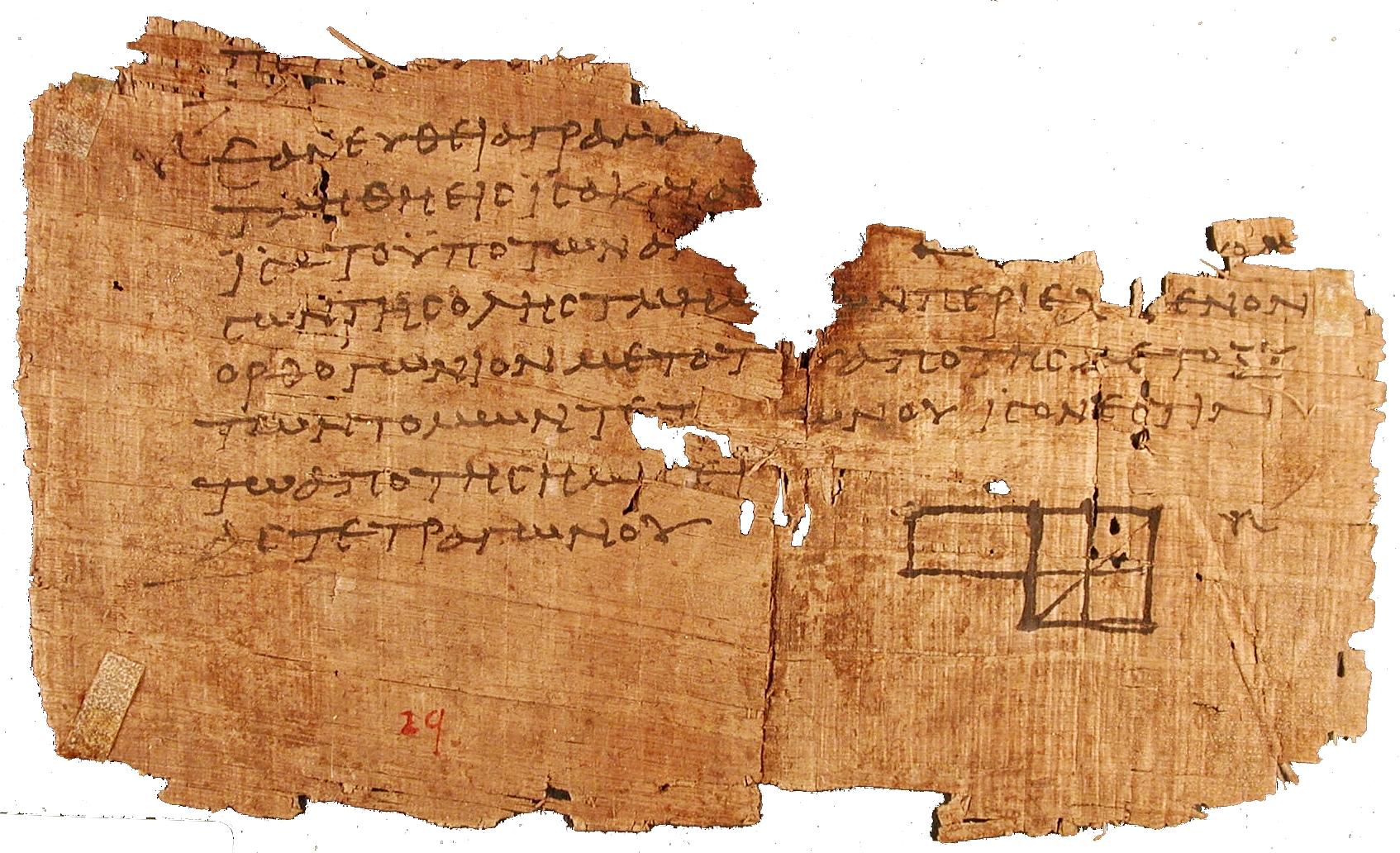History and Background
Euclid of Alexandria
 (a)
(a)  (b)
(b) Alexandria Egypt
Influences to Euclid
Elements
 (c)
(c) Elements Manuscript
A thorough translated online version of all 13 books in Euclid's Elements can be found at this link:
Euclid's Elements Translation .(d) This link also provides commentary on some of the logical criticisms that are presented in the next section. (unfrortunately the javascript has not been updated by the author and his applets are unable to be viewed)
Questions Arise
 (e)
(e) | Section | Description |
| History and Background | This section of the wepage introduces Euclid, who influenced him, Elements, and questions that arise from Elements. |
| Significance and Application | This section addresses the influnce of Elements and applications into other fields of study. |
| Explanation of Mathematics | This section looks at how Elements is organized, explains inductive and deductive principles, and provides a few examples of proofs |
| References | This section provides the references cited in this webpage. |